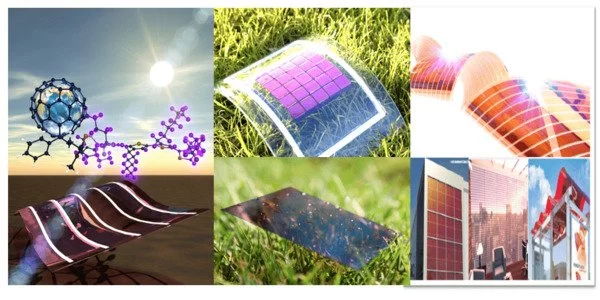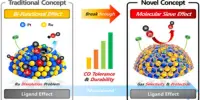An organic solar cell (OSC) is a type of photovoltaic that uses organic electronics, a branch of electronics that deals with conductive organic polymers or small organic molecules, for light absorption and charge transport to generate electricity from sunlight via the photovoltaic effect. The majority of organic photovoltaic cells are polymer solar cells.
Solar cells that are efficient and environmentally friendly are required for the transition to a fossil-free energy supply. Researchers at Linköping University have mapped how energy flows in organic solar cells, which was previously unknown. The findings, which could lead to more efficient solar cells, were published in Nature Communications.
“To fully realize the potential of organic solar cells, a clear understanding of how they work is required. We now have that image. This provides a better understanding of how to develop new efficient and sustainable solar cell materials” says Mats Fahlman, a professor at Linköping University’s Laboratory of Organic Electronics.
Solar energy currently meets about 2% of the world’s energy needs. But its potential is far greater. The energy contained in the sun’s rays is more than enough to meet our needs today and in the future. To be successful, solar cells that are inexpensive and environmentally friendly must be manufactured. In addition, they need to be efficient at absorbing a large proportion of the sun’s rays and converting to electrical energy.
To fully realize the potential of organic solar cells, a clear understanding of how they work is required. We now have that image. This provides a better understanding of how to develop new efficient and sustainable solar cell materials.
Professor Mats Fahlman
Organic solar cells based on organic semiconductors are becoming more popular as a sustainable option. However, until recently, they were inefficient in comparison to traditional silicon-based solar cells. This was due to energy loss during charge separation, which was thought to be unavoidable.
However, in 2016, a research team at Linköping University and colleagues in Hong Kong demonstrated that it was possible to avoid energy loss by using different donor-acceptor materials that help the electron escape from its hole more easily. After that, energy loss decreased and efficiency increased. The problem was that no one knew how it happened. It was possible to see that it worked, but not why.
Some of the same research team at Linköping University have now solved the mystery that had led to disagreement in this field of research. In a new study published in Nature Communications, the researchers have identified what energy levels are required to minimise energy losses.

“To investigate how energy flows, we stacked nanometre-thick organic semiconducting films one on top of the other, much like a strawberry and cream cake. Following that, we calculated the energy required to separate electrons from holes in each individual layer” Xian’e Li, a PhD student at Linköping University and the scientific article’s lead author, says
The mechanism underlying the energy-efficient charge separation was then mapped by the researchers. This systematic mapping paves the way for the advancement of organic solar cells. The study is supported by the Swedish Research Council, the Swedish Energy Agency, and the Swedish Government’s Advanced Functional Materials strategic initiative at Linköping University.
Organic solar cell molecules are solution-processable at high throughput and inexpensive, resulting in low production costs for large volumes. Organic solar cells, when combined with the flexibility of organic molecules, have the potential to be cost-effective for photovoltaic applications. Molecular engineering (for example, changing the length and functional group of polymers) can alter the band gap, enabling electronic tunability. Because organic molecules have a high optical absorption coefficient, a large amount of light can be absorbed with a small amount of material, typically on the order of hundreds of nanometers. When compared to inorganic photovoltaic cells such as silicon solar cells, the main disadvantages of organic photovoltaic cells are low efficiency, low stability, and low strength.
[Footnote: The organic solar cells used in the study have an electron acceptor made of a material other than fullerene (a type of carbon), which was previously the most commonly used material. Organic cells based on non-fullerenes become more stable and capable of absorbing a greater proportion of the sun’s rays for conversion to energy.]
















